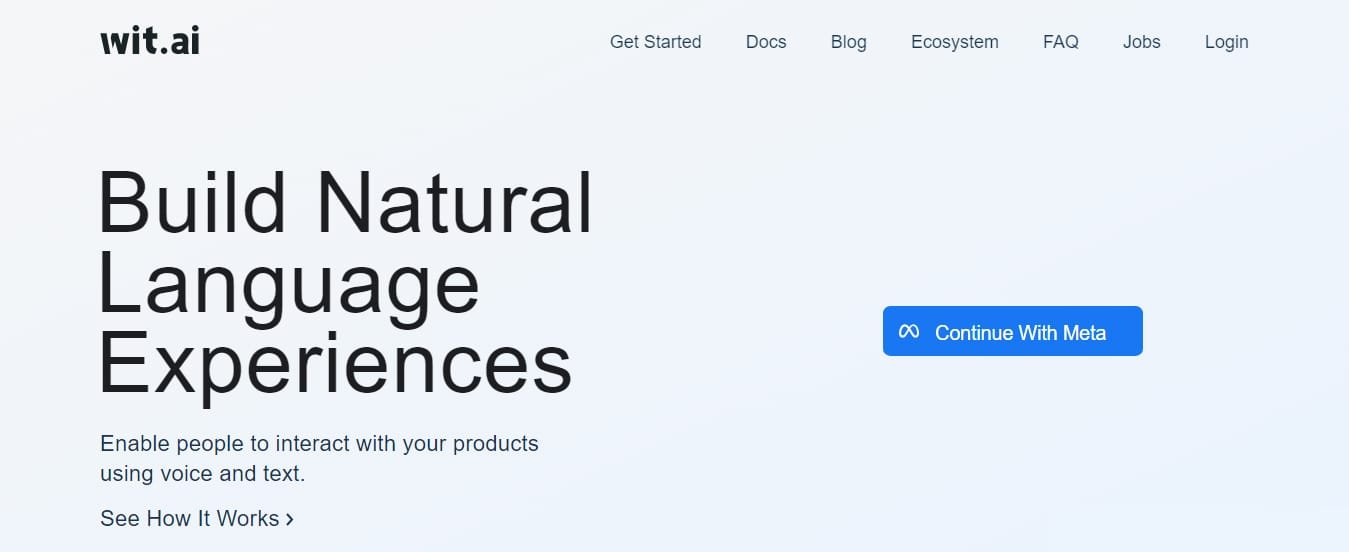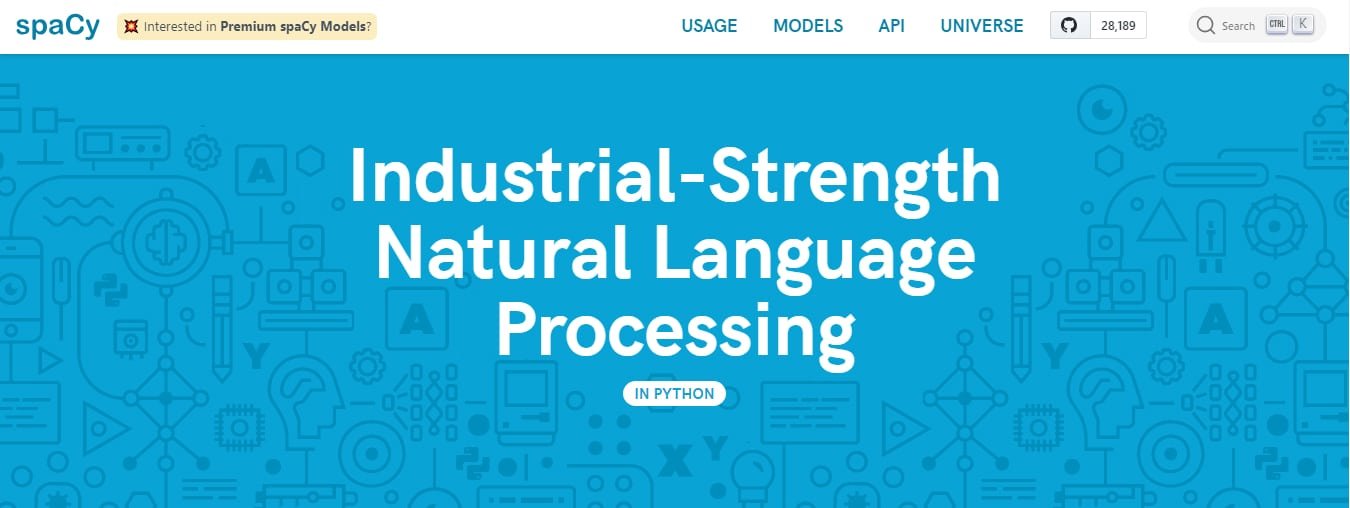2500+
Successful Projects
The leading supplier of artificial intelligence (AI) products and services for machine learning (ML) and natural language processing (NLP) is Hugging Face. AI content identification is one of the Hugging Face’s main areas of strength.
The process of automatically determining whether or not a piece of information was produced by an artificial intelligence system is known as artificial intelligence content detection. This may be helpful for several things, such as identifying spam or improper material produced by AI or confirming the legitimacy of texts purporting to be authorized by people.
Businesses and organizations all around the globe rely on Hugging Face’s AI content detection technologies to guarantee the authenticity and integrity of their material. For instance, a business may use Hugging Face’s AI content identification to confirm that postings on social media or in customer support emails are written by people and not by AI programs.
Hugging Face is leading the way in the growing trend of using artificial intelligence (AI) for content identification. To find out how Hugging Face AI works and how it stacks up against other platforms, continue reading. Table of Contents
Hugging Face may seem like simply another emoji on most people's phone keyboards (🤗).
But in the IT sector, it's the GitHub of machine learning — an open-source code collaboration platform full of tools that allows anybody to develop, train, and use NLP and ML models.
The revolutionary turn of events?
Crushing into NLP is made much easier by the fact that these models are pre-trained. In other words, instead of starting from scratch, developers can just load a pre-trained model from the Hugging Face center, adjust it for the tasks at hand, and get started.
The development process is made a great deal simpler by this simplicity of usage.
Hugging Face is thus a meeting place for academics, ML engineers, and data scientists to share ideas, look for help, and participate in open-source projects.
They identify as:
"The AI community: constructing the future together."
Using a community-driven approach is exactly one of the key components that makes Hugging Face successful.
The platform's ease of use is another factor contributing to its rapid expansion. For both beginners and experts, it is simple to get started when there is a straightforward interface.
Hugging Face is dedicated to democratizing AI and enabling it to be available to a worldwide community. To that end, it aims to provide the greatest collection of NLP and ML materials.
With the help of this capacity, the tool may produce text that seems human depending on the input. It makes use of the GPT-2 model, a large-scale language generation model that generates text of excellent quality in a range of forms and styles.
The tool is based on the popular open-source Transformers library for natural language processing. A transformer-based language model called RoBERTa has been refined for certain tasks after being trained on a large dataset. It has been shown to perform better in several NLP tasks and is recognized as an enhanced version of BERT.
The tool enables the user to adjust the pre-trained model according to their own data set, which enhances performance on the particular job they choose to utilize it for. About their particular use case, this functionality may assist users in achieving more accuracy and better outcomes.
Advantages | Cons |
No cost to use | doesn't offer reports on plagiarism |
able to recognize GPT-2 output | There have been many reports of the website being down. |
Basic User Interface | less precise than other AI content detection systems |
We used a sample of seven ChatGPT-generated pieces of material in a controlled experiment to evaluate the accuracy of Hugging Face AI. Another artificial intelligence (AI) writing program named Jasper produced these content items. The example text is available here.
To ascertain whether or not the material was produced by an AI, we examined the sample using Originality.AI in conjunction with Hugging Face’s AI content recognition tool. These are the outcomes we obtained.
Based on the outcomes of the offered controlled experiment, Originality.AI is a more accurate tool for identifying AI-generated material, according to the test’s unambiguous findings. Though it is crucial to acknowledge that results are contingent upon the limited sample size and the particular dataset used in the controlled study, it is evident that originality.AI exhibits a superior level of overall accuracy. Hugging Face AI has a detection score of 20.30%, while Orignality.AI has an average of 79.14%.
This illustrates how Originality.AI detects AI-generated material with greater accuracy. The algorithm used by Originality.AI is more appropriate for the particular use case of identifying material written by AI.
It is essential to remember that the test’s particular content and sample size will have an impact on the outcomes. A bigger, more complete investigation with a representative sample of material that is varied would be necessary to fully examine the efficacy and accuracy of the AI content recognition techniques.
However, our experiment's findings make it abundantly evident that Originality.AI outperforms other methods in terms of accurately identifying material created by artificial intelligence.
Businesses and organizations searching for an extremely accurate and dependable AI content identification technology should choose Originality.AI. It differs from other products on the market due to its better performance in our trial, properly recognizing every piece of material in the sample as being created by an AI.
Hugging Face AI is a more versatile AI platform that provides a large selection of tools and services related to machine learning (ML) and natural language processing (NLP). Though these are not its main emphasis, it does include techniques for identifying plagiarism and material created by artificial intelligence.
On the other hand, corporations and organizations all around the globe employ Originality.AI, an AI content recognition tool. It has earned a reputation for expertise in this industry and is well-known for its high accuracy in identifying information created by artificial intelligence.
Regarding the salient characteristics and functionalities of both platforms, Hugging Face AI and Originality.AI provide an array of potent and advantageous instruments. They concentrate on various topics and are aimed at distinct audiences, however.
Developers, researchers, and companies are the target audience for Hugging Face AI, which provides a variety of sophisticated NLP and ML tools and services. Identifying AI-generated material is the primary emphasis of Originality.AI, which provides a range of tools for this goal.
Based on the outcomes of our last test, Originality.AI is the obvious victor in terms of accuracy. The higher detection accuracy of AI-generated material by Originality.AI may be attributed to several variables. These could consist of:
In order to identify AI-generated material, Originality.AI may employ machine learning models or more sophisticated algorithms, which may result in greater accuracy rates.
Both the variety and quality of training data have a significant impact on machine learning models' accuracy. Originality.AI's models may be more accurate since it has access to a bigger and more varied dataset for training.
Originality.AI, a specialist in AI content recognition, could have tailored its models and algorithms for this particular use. It could have an edge over more versatile systems like Hugging Face AI because of this.
To increase its accuracy in identifying material created by artificial intelligence, Originality.AI may additionally make use of extra context and metadata, such as the content's source and the author's background.
It is also important to keep in mind that the results of the test will depend on the sample size and the particular content used. To fully evaluate the efficacy and accuracy of the AI content detection tools, a larger, more thorough study with a representative sample of content would be required. On the other hand, our experiment's findings suggest that Originality.AI has a distinct edge when it comes to identifying AI-generated material.
Hugging Face AI’s emphasis on machine learning (ML) and natural language processing (NLP) is one of its main benefits. Hugging Face AI is a general-purpose AI platform that provides developers, academics, and enterprises with a broad variety of sophisticated NLP and ML tools and services that are very efficient.
With its emphasis on NLP and ML, Hugging Face AI may increase accuracy primarily via the use of sophisticated algorithms and machine learning models. Hugging Face AI can identify plagiarism and AI content with high accuracy rates by using the most recent methods and technology in these domains.
Hugging Face AI’s versatility and adaptability are more benefits. Because of its versatility, it can be used for a broad variety of jobs and applications. Additionally, its tools and services may be tailored to fit the unique requirements of various users and projects.
Tis adaptability enables users to customize their tools and methods to the particular needs of their activities, which may aid increase accuracy.
Regarding specific situations where Hugging Face AI’s accuracy may result in better results, customers may have seen fewer instances of plagiarism or false positives as a result of the platform’s high accuracy rates.
For instance, if a company uses Hugging Face AI for plagiarism detection, its papers could have less copied material, or if a researcher uses Hugging Face AI for AI content identification, their study might contain fewer false positives.
Three easy steps, totaling fewer than five lines of code, are typically involved in standardizing any NLP process using Hugging Face:
In NLP, text categorization is a basic job. It involves allocating one or more categories to each input text. Numerous uses for this exist, including subject tagging, sentiment analysis, spam detection, and more.
You can see in the sample code below how we can create a text classification model using only the three easy steps from the previous section.
Let's go on to the second use case, which is also one of the most often exploited.
The majority of you are probably already aware of Google Bard and ChatGPT, two programs that create text in response to an input prompt. This technique, known as “Text Generation,” is an intriguing facet of natural language processing (NLP) in which a model generates text that seems human from an initial input.
It may be used for a variety of tasks, such as coming up with original content or crafting chatbot replies.
The main concept is to reach a model to recognize patterns, style, and linguistic structures by subjecting it to a large corpus of text. As one would expect, the model’s training is the most costly component.
But, like in the previous example, Hugging Face enables us to create such a model in just five lines of code.
The goal of the NLP area of question answering, or “QA,” is to create systems that can automatically provide natural language answers to inquiries from people.
Applications like information retrieval systems, virtual assistants, and customer assistance all make extensive use of QA systems.
Two basic categories may be used to classify QA systems:
Open-Domain Quality Assurance
Responds to inquiries using a wide variety of expertise, often drawn from vast databases or the internet.
Closed-domain
QA answers queries from a small dataset while concentrating on a particular subject, such as law or medicine.
Usually, these systems combine information retrieval to locate pertinent replies with natural language processing to comprehend the inquiry.
Once again, utilizing Hugging Face to create one of these models is quick and simple.
Translation is the last usage scenario. Within the discipline of computational linguistics, machine translation is the use of software to translate text or voice across different languages. Machine translation has advanced significantly with the introduction of deep learning, especially with models like Neural Machine Translation (NMT) that make use of massive neural networks.
Unlike conventional rule-based or statistical translation models, modern NMT systems acquire translation skills by training on massive bilingual text datasets. They use sequence-to-sequence architectures, in which the source text is encoded by one component of the network and then, often with remarkable accuracy and fluency, decoded into the target language by another.
Hugging Face, a US-based NLP firm, recently announced that is has secured an incredible $40 million in investment. To support the expansion of the NLP ecosystem, the firm is establishing a sizable open-source community. It’s transformers package, which is built on Python, provides an API for using many popular transformer designs, including GPT-2, RoBERTa, BERT, and DistilBERT. The best Hugging Face Alternatives are listed below.

Regardless of the application, platform, or channel they employ, businesses can react to consumers’ inquires in a prompt, clear, and accurate way thanks to IBM’s AI solution, Watson Assistant. It developers an application that can converse with users in many languages and comprehend natural conversations, much as a person would. It is also dynamic in that it may provide organizations with tailored solutions based on their requirements. Nevertheless, third-party integration is not supported by the platform.

A service that uses machine learning, LUIS, i.e. Microsoft offers Language Understanding, which allows businesses to create IoT devices, applications, and chatbots by modifying natural languages. To enhance LUIS services, valuable data such as user discussions from a variety of built-in apps –such as the dictionary, music player, calendar, and weather app –are usually employed. In addition to being multilingual, it offers customizable models that are easy for clients to use. Furthermore, it integrates with messaging apps, online environments, and social networks with ease, making scalability simple. It facilitates third-party integration and voice recognition.

Designed by Amazon, Lex offers sophisticated deep learning modules including natural language understanding (NLU) to identify textual meaning and automated voice recognition (ASR) to covert speech text. It includes the AWS platform, which can be used for more than just that. You can use it for user authentication, security, storage, monitoring, and development mobile apps. This platform’s chatbots may respond to user queries for the newest news, live scores, recipe books, and weather data.

Google built Dialogflow, the engine of Google Assistant, with the use of deep learning technology. The platform makes use of a technology called BERT-based natural language understanding (NLU), which may raise the call or chat containment rate for the business. Moreover, it can construct voice-characteristics, which enables businesses to easily interact with their international clientele. Unlimited API calls are one of the finest things it can provide consumers.

Facebook’s Wit.ai natural language interface is capable of turning voice or phrases into structured data. Developers may use wint.ai to build applications, bots, wearables, lights, speakers, and other smart home products for consumers. This AI technology supports 132 languages and is supported by over 200,000 developers. It works with Slack Facebook Messenger, Google Assistant, and Alexa. Its greatest features are its compatibility with several languages and third-party integration.

Pre-trained NLP models in SpaCy, one of the newest open-source NLP with Python packages, enable rapid processing of massive amounts of data. With features including entity linking, morphological analysis, sentence segmentation, text classification, named entity identification, part-of-speech tagging, dependency parsing, lemmatization, and more, the product is useful for extracting insights from massive volumes of unstructured data. The platform has pre-trained transformers like BERT and supports over 64 languages. Additionally, it has built-in support for TensorFlow, PyTorch, and other frameworks’ custom models.
Hugging Face AI provides a broad variety of extremely efficient natural language processing (NLP) and machine learning (ML) tools and services that are often used by developers, academics, and enterprises. Hugging Face AI does this via the usage of tis Transformers library. Additionally, because of its extreme flexibility and adaptability, users may tailor its tools to suit a variety of jobs and applications.
However our experiment reveals that Originality.AI outperforms Hugging Face AI in terms of accuracy in identifying content generated by AI. This could be attributed to various factors, such as Originality’s sophisticated algorithms, superior training data sets, and greater attention to this task.
However, each platform has advantages and disadvantages of its own, and the choice of which to utilize will ultimately come down to the particular objectives and needs of each individual or organization.
What is Hugging Face used for?
Hugging Face is used for natural language processing (NLP), machine learning, and artificial intelligence (AI) applications, particularly in the development and deployment of models for tasks such as text classification, sentiment analysis, and translation.
Does Hugging Face make money?
Yes, Hugging Face makes money through its software products and services, including sales of its AI platform and partnerships with other businesses.
Is Hugging Face model free?
While some Hugging Face models are available for free, others require a subscription or payment for commercial usage.
Why is it called Hugging Face?
The name "Hugging Face" is likely a playful reference to the emotional aspect of language understanding and the ability of AI to "understand" and interact with human language, similar to how a person might "hug" or embrace someone they care about.
Is Hugging Face private?
The level of privacy offered by Hugging Face is not detailed in the sources, but many tech companies have policies to protect user data and privacy.